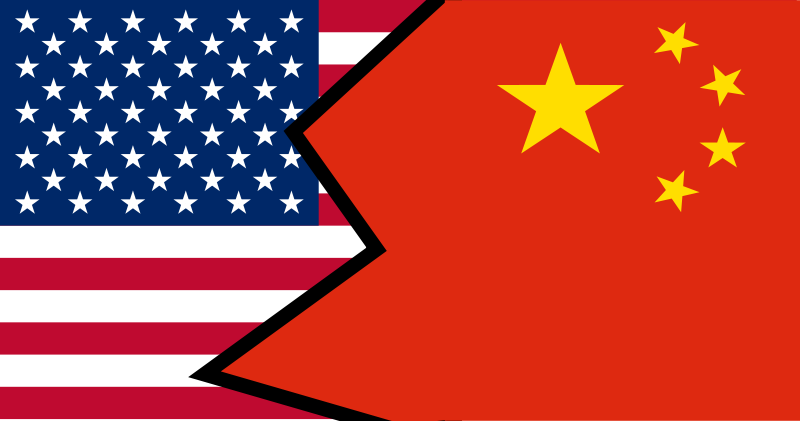The serious representatives of capitalism are petrified that the ongoing trade dispute between China and America could erupt into a full-blown economic war. In a recent editorial for the Financial Times, associate editor Martin Wolf described US President Donald Trump’s latest plan to reduce the $337bn US-China trade imbalance by imposing $200bn worth of tariffs on Chinese goods (over two years) as a “crazy” act of “fiscal irresponsibility”. But there is method in Trump’s madness. He is predictably applying his particular art of negotiation: threaten, bully and bluster – then strike a deal. However, Trump’s bellicose behaviour risks further destabilising an already-precarious global economy.
The US has been locked in tit-for-tat protectionist skirmishes with China for months. The first shot was fired when Trump imposed a 25 percent import tariff on steel and 10 percent tariff on aluminum on 23 March; from which the EU, Canada, Mexico, Argentina, Australia and Brazil are exempt until 1 June. This move was answered by China’s imposition of 15-25 percent tariffs on 128 products (including key American exports, like pork) on 2 April. This was followed by a threat from the Americans on 3 April to introduce new, 25 percent tariffs on 1,333 products (amounting to $50bn of annual imports), specifically targeting China’s intellectual property regime. The next day, China filed a complaint with the World Trade Organisation (WTO) and matched the Americans by threatening a 25 percent tariff on $50bn worth of US exports, particularly soybeans.
An impossible offer
In response to this last move, and ahead of negotiations in Beijing at the beginning of May, Trump issued a raft of terms for ending the escalating tariff battle, which has been described as a declaration of fiscal warfare. Aside from the aforementioned $200bn reduction of the US-China trade deficit, Trump wants China to eliminate “market-distorting subsidies”: government incentives that have helped push China forward in certain high-tech industries, like the production of electric cars. He also wants the country to toughen up its anti-piracy regime. He further demands that China reduce its tariffs in “non-critical sectors” to a level no higher than equivalent US tariffs by 2020. To top it all off, he insists that China withdraw its WTO complaint, afford the United States “fair, effective and non-discriminatory market access and treatment” (according to Trump’s standards of fairness), and endure these indignities without taking any retaliatory action against American goods. As Wolf summarised: “US will be judge, jury and executioner, while China will be deprived of the rights to retaliate or seek recourse to the WTO”.
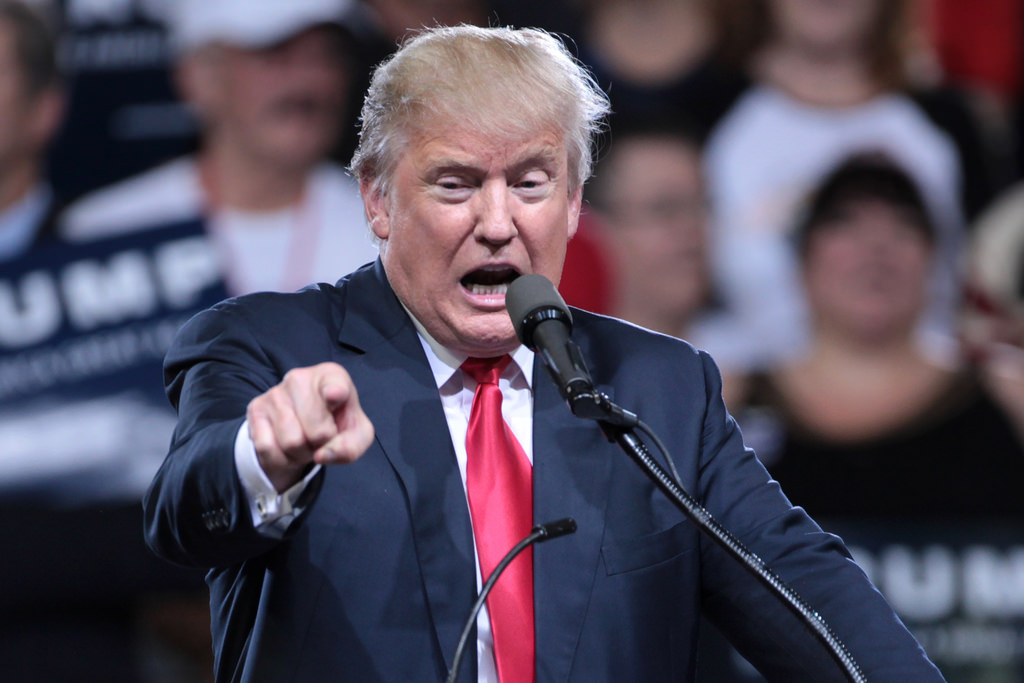 Trump is trying to bully China, but he is unleashing forces he can't control / Image: Flickr, Gage Skidmore
Trump is trying to bully China, but he is unleashing forces he can't control / Image: Flickr, Gage Skidmore
The real problem however is not the “unfair” practices of China. The United States subsidies its own big business with hundreds-of-billions of dollars every year. The most famous US electric vehicle manufacturer, Tesla, has received at least $5bn dollars in subsidies, without which it would go bankrupt. The real issue is not China’s infringement on ‘fair’ trade, but that China seeks to develop its economy in advanced sectors where US companies have been dominant for decades. As a part of its new industrial policy (detailed in the “Made in China 2025” document published in 2015), Beijing seeks to master 10 high-tech industries, including robotics, semiconductors and electric vehicles.
Given the fragile world economy, China is forced to expand into new territories and sectors to maintain its economic growth. For the US however – the preeminent imperialist world power – that is not an option. The Americans cannot accept encroachment on their core economic interests, nor loosen their grip around the world economy. Furthermore, the United States' plan is exactly the opposite of China’s: to export its own crisis globally. That is the essence of Trump's America First policy: to make the rest of the world pay while the US cashes in.
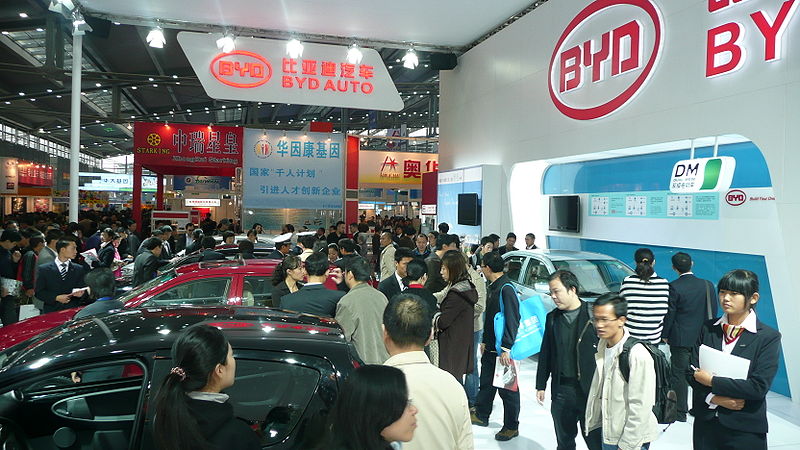
Trump and the wing of the ruling class he represents are set to achieve this by brute force and bullying other nations into submission. As we have previously reported, Trump likes to bring situations to the very brink of catastrophe before giving ground. Martin Wolf castigated Trump’s demands on China as a deliberate “humiliation” that “no sovereign power” could ever accept. But Trump and his allies believe that flexing the muscles of US imperialism will be enough to bring the Chinese to the negotiation table. He’s looking to make a deal and wants to gain leverage. He feels he is in a strong position because a trade war would be far more costly to China than to the United States. However, he forgets that China is not a small, weak nation, but a rising, capitalist power. Together these two economies amount to almost 40 percent of the world economy. The Chinese are not going to back down easily, and this could lead to catastrophic, unforeseen consequences for the whole world economy.
Art of the deal?
One such consequence came shortly after Trump declared his willingness to go toe-to-toe with China. The biggest, listed, Chinese telecoms company, ZTE, was almost put out of business after being slapped with a seven-year ban on working with American companies. This followed a US Commerce Department ruling that ZTE had exported sensitive American technologies and components to Iran and North Korea.
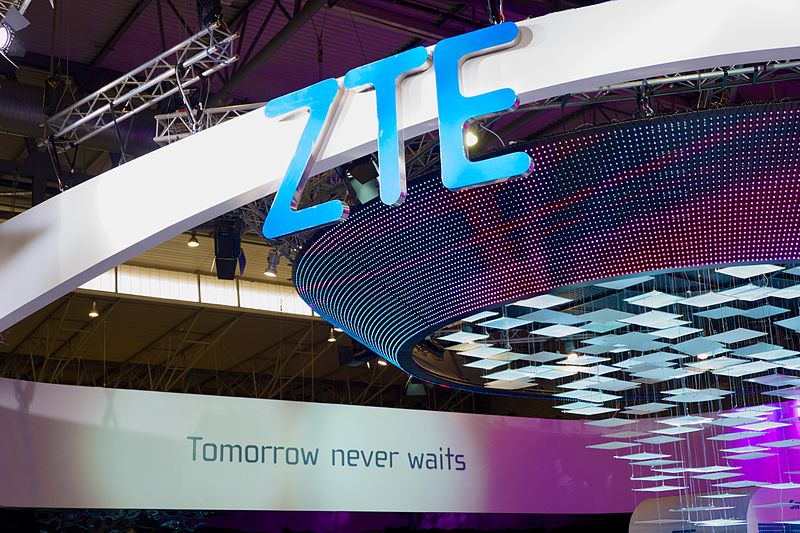 Trump rescued ZTE to prevent spiraling hostilities / Image: Kārlis Dambrāns
Trump rescued ZTE to prevent spiraling hostilities / Image: Kārlis Dambrāns
Of course, the real reason was to protect big US telecoms companies such as Apple from Chinese competition and preserve their effective monopoly over the US market. China relies heavily on the Americans for smartphone components, and ZTE was set to be the first serious casualty of the combative economic relations between the two countries. If a real trade war breaks out, such instances would mushroom in both countries. Considering that cellphones are the single biggest export from America to China (representing 14 percent of total exports), coupled with the size of the Chinese market for American-made smartphone components, you get a sense of the level of destruction that could come about in this sector alone as a result of tit-for-tat retaliation. Thus, Trump had to hastily backtrack and personally intervene, demanding the Commerce Department step-in to rescue ZTE. Effectively, the company was granted a presidential pardon. Trump even proudly tweeted about his benevolent gesture:
President Xi of China, and I, are working together to give massive Chinese phone company, ZTE, a way to get back into business, fast. Too many jobs in China lost. Commerce Department has been instructed to get it done!
— Donald J. Trump (@realDonaldTrump) May 13, 2018
This is the second time Trump has wound back sanctions that would have seriously damaged American economic interests. In April, America signalled it was willing to scrap sanctions against Russian aluminium group Rusal after the measures sent metals prices skyrocketing. This is all evidence of how Trump’s reckless, short-sighted actions create discord he did not reckon on.
Trade-war tango
Trump seemed to confirm his aboutface in another tweet on 13 May, after returning from his Virginia golf club:
China and the United States are working well together on trade, but past negotiations have been so one sided in favor of China, for so many years, that it is hard for them to make a deal that benefits both countries. But be cool, it will all work out!
— Donald J. Trump (@realDonaldTrump) May 13, 2018
But Trump doesn’t realise that once he sets in motion a process, it acquires a logic of its own. At that point, you cannot “be cool” and turn back time to the original position. Trump is conjuring up forces which cannot control. Until recently, he managed to unite Republicans, Democrats and the European Union behind his tough stance on China. But cracks are beginning to appear on the surface of this alliance. America’s unilateral withdrawal from the Iran nuclear deal has left many of his closest European allies frustrated and humiliated. The EU stands to lose billions of dollars worth of trade with Iran and there might even be a risk that former allies could be pushed into new trade agreements with the Chinese to compensate for lost business. Other traditional US allies such as Japan and South Korea, seeing that they cannot count on US support could also pursue a more independent line.
Domestically some of Trump’s political opponents used the opportunity to criticise Trump’s apparent softening on China. Marco Rubio tweeted: “Problem with ZTE isn’t jobs & trade, it’s national security & espionage...I hope this isn’t the beginning of backing down to China.” Chuck Schumer, leader of the Democrats in the Senate, said Mr Trump’s move was “designed to achieve one goal: make China great again”.
Other members of the American ruling class are afraid that Trump will sue for a quick deal on the trade deficit rather than turning the screws and holding out for more comprehensive concessions. The fact that ZTE was caught red-handed violating American trade embargos, and has been spared, has only fueled their fears. ‘China hawks’ like Robert Lighthizer and Peter Navarro want to immediately impose $150bn in import tariffs to extract bigger concessions from the Chinese. US ambassador Terry Branstad, speaking at a conference in Tokyo, deflated optimism by insisting that the US and China are “still very far apart” on their trade dispute. Branstad said America is waiting on a timetable of concrete commitments from China before any giving ground.
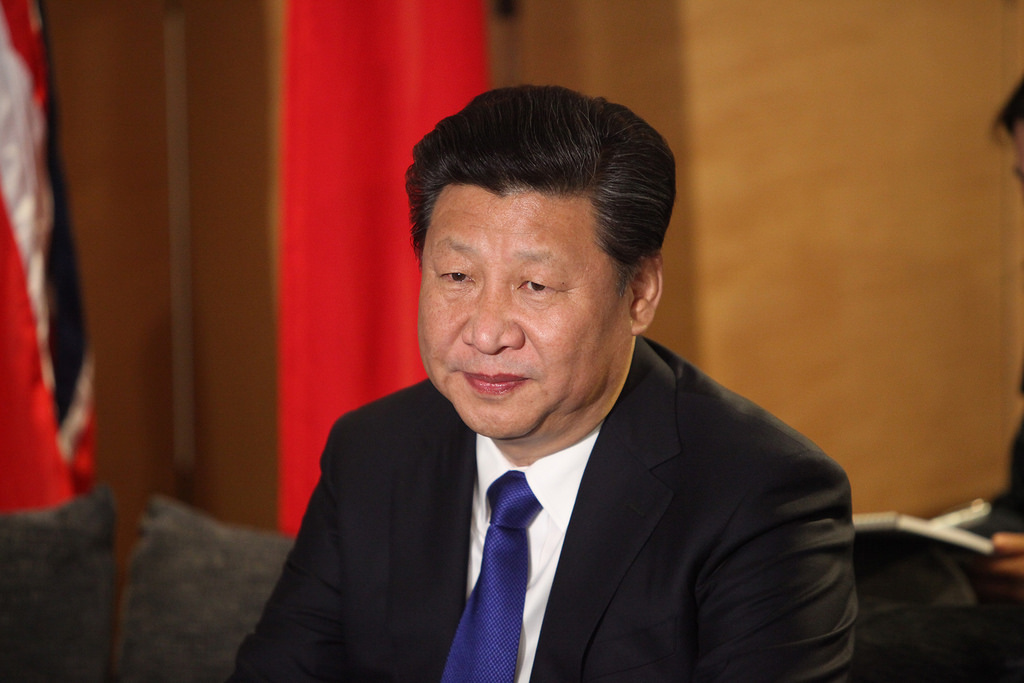 Neither the US nor China really want a trade war, but there are limits to how much ground they can concede / Image: Foreign and Commonwealth Office
Neither the US nor China really want a trade war, but there are limits to how much ground they can concede / Image: Foreign and Commonwealth Office
But while the US is by far the most powerful capitalist power on the planet, its relative strength has declined. Trump’s ridiculous series of demands are the economic equivalent of his threats to rain “fire and fury” on Pyongyang. He doesn’t want a trade war, any more than he wanted a Third World War. He just wants to gain as big of an advantage as possible in negotiations and come up with a better deal for American capitalism. The Chinese, for their part, also have no appetite for war. Talks in Beijing at the beginning of May amounted to nothing, but China has offered an olive branch in the form of new investment regulations that will allow foreign finance groups to take majority stakes in securities companies, and a promise to buy more American superconductors. The Chinese are well aware of Trump’s intentions, and are open to some give-or-take, but there is a limit to the concessions that Chinese capitalism can and will afford. Wang Chong Liu, an expert in Sino-US relations with a Chinese think-tank, Charhar Institute said as much:
“Trump clearly knows China will never agree to US demands that concern its core interests. It’s more of a bargaining and negotiation strategy [by Mr Trump]. Liu He [Vice-Premier of China and Xi Xinping’s economic advisor] is going to Washington to tell the US what he can offer.”
Seeking stability in vain
In reality, what both China and the serious wing of the American ruling class are after is stability – especially with the world markets in a fragile state. The cooler heads in the Trump administration likely urged the president to rescue ZTE to avoid an uncontrolled escalation of hostilities. But at the same time, they are desperate to defend the dominant position of the US in the world economy. In a period of economic crisis and stagnation, this can only happen at the expense of other economies. Trump’s policies reflect this economic necessity. But Trump is a gambler and he is playing a very risky game.
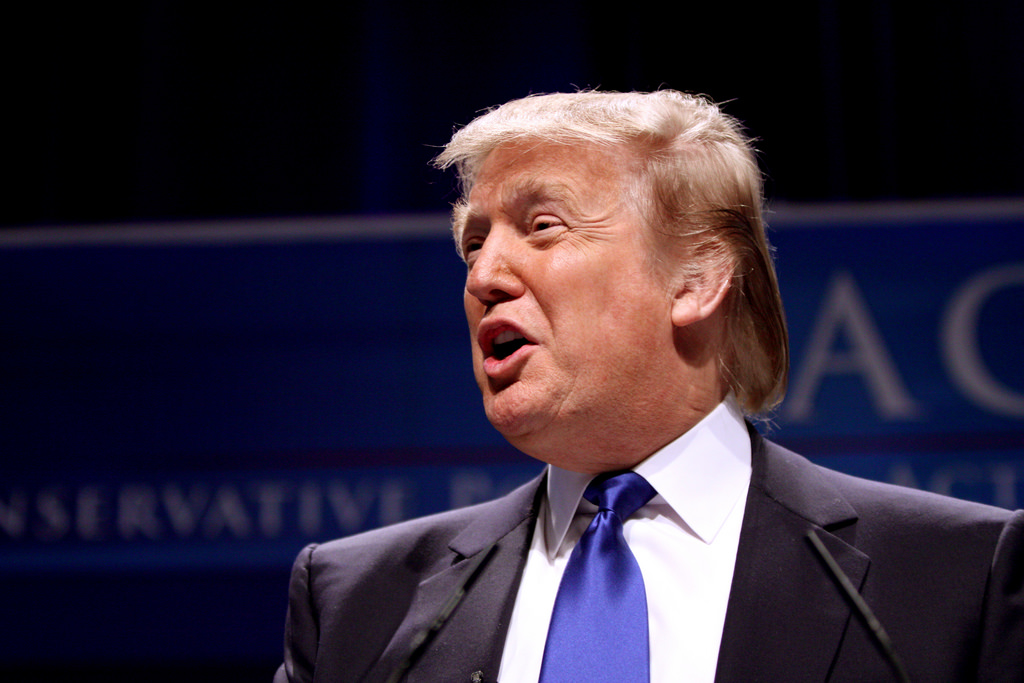 Trump is a gambler, playing a very risky game / Image: Flickr, Gage Skidmore
Trump is a gambler, playing a very risky game / Image: Flickr, Gage Skidmore
The fundamental problem remains that Chinese and American capitalism are still at loggerheads. The conditions of this conflict are determined by the impasse of world capitalism. China needs to resolve its crisis of overproduction by opening up new markets for itself. It can only do this by developing its high-tech industries and forging new trade relationships (such as via the One Belt, One Road Initiative). All of this trespasses areas the US ruling class sees as its own.
Each ruling class seeks to protect its own economic interests, giving rise to protectionist tendencies. But protectionism invites further protectionism, and a beggar-thy-neighbour approach by the ruling class internationally could serve as the catalyst for another world slump. With the global markets in an incredibly precarious state,no major powers can take a step without creating further instability. Whether China and America manage to patch up a “mini deal” in the short-term will do nothing to alleviate the underlying contradictions that put them at odds to begin with.

